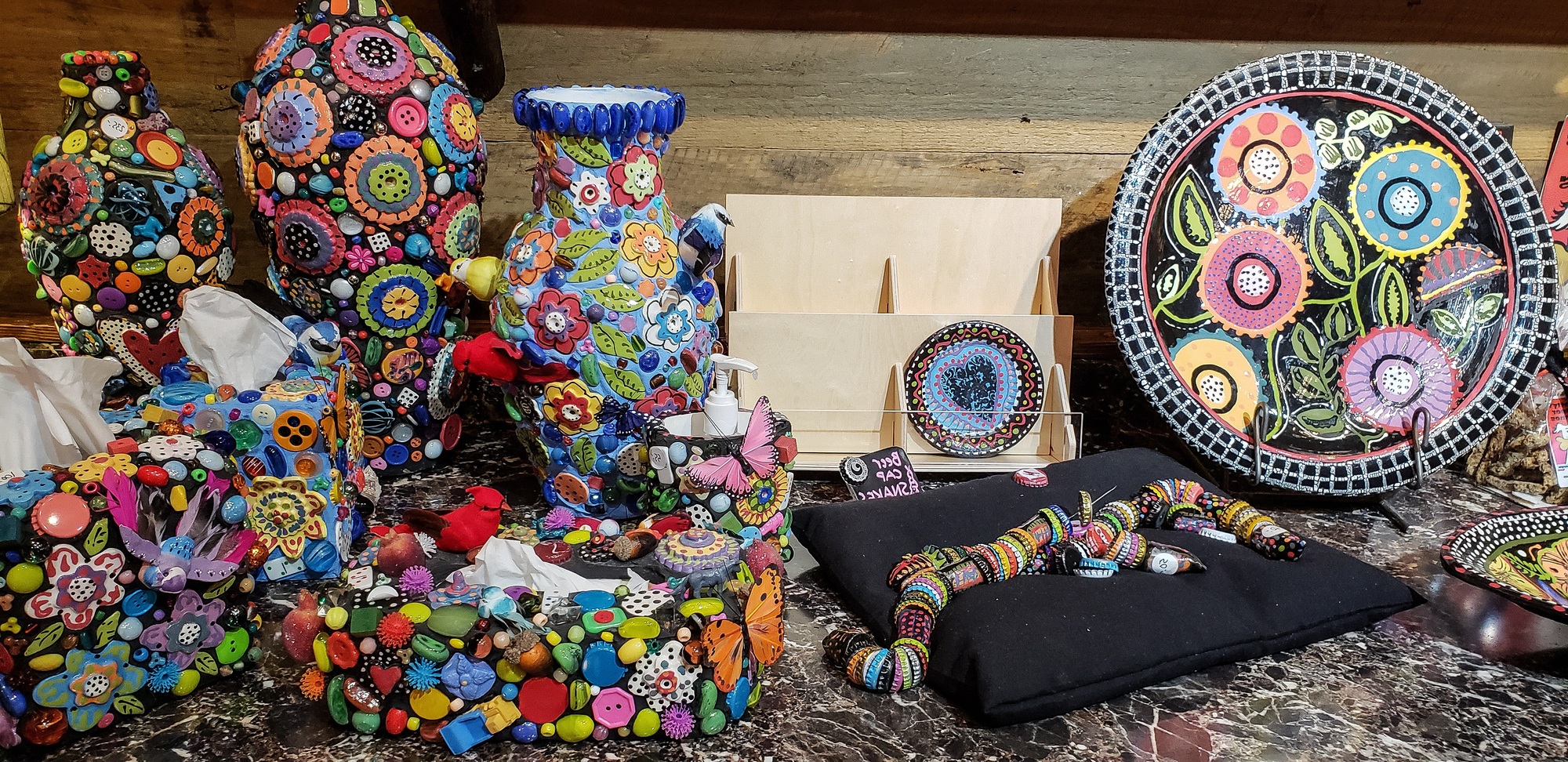Key Takeaways

- Understand the Art Market: Familiarize yourself with market dynamics, types of sales, and key players to position your work effectively and attract buyers.
- Prepare Your Art for Sale: Focus on compelling presentation, appropriate pricing, and creating a professional portfolio to draw potential buyers’ interest.
- Build an Online Presence: Establish a strong digital footprint through a professional website and social media platforms to increase visibility and connect with a broader audience.
- Utilize Social Media Strategically: Engage with followers on platforms like Instagram and Facebook, post regularly, and collaborate with other creatives to enhance your reach.
- Selling Strategies: Use online marketplaces like ArtPal, Fine Art America, and Saatchi Art for efficient sales, and consider in-person engagements to connect with buyers on a deeper level.
- Craft Your Narrative: Develop a compelling story behind your artworks to create emotional connections, encouraging potential buyers to invest in your pieces.
Selling art can feel like a daunting task, but it doesn’t have to be. Whether you’re a seasoned artist or just starting out, understanding the art market and knowing how to effectively showcase your work is crucial. You have a unique vision that deserves to be shared, and with the right strategies, you can connect with buyers who appreciate your creativity.
In this guide, you’ll discover practical tips and proven techniques to help you navigate the world of art sales. From building your online presence to engaging with potential buyers, you’ll learn how to present your work in a way that captivates and converts. Let’s dive into the essentials of selling art and unlock the potential of your artistic journey.
Understanding the Art Market

Understanding the art market is crucial for successfully selling your art. Awareness of market dynamics and trends helps you position your work effectively and attract buyers.
Types of Art Sales
- Direct Sales: Sell your art directly to customers through galleries, art fairs, or pop-up events.
- Online Sales: Use platforms like Etsy, Saatchi Art, or your own website to reach a wider audience.
- Consignments: Partner with galleries to showcase your work where they sell on your behalf, taking a commission on sales.
- Auctions: Participate in art auctions where your work may achieve high sale prices if it garners interest from collectors.
Key Players in the Art Market
- Artists: You create art, establishing your brand and work style.
- Galleries: Galleries promote and sell art, playing a key role in connecting artists with buyers.
- Collectors: Collectors purchase artworks, often for investment or personal enjoyment.
- Art Dealers: Dealers facilitate transactions between artists and collectors, providing market insights and expertise.
Understanding these types of sales and key players empowers you to navigate the art market effectively, positioning your small business for success in art sales.
Preparing Your Art for Sale

Preparing your art for sale requires attention to detail and strategic planning. Focus on creating a compelling presentation that attracts potential buyers and reflects your unique style.
Pricing Your Art Appropriately
Price your artwork based on factors such as materials, size, and time invested. Research similar artworks in your market to understand the average pricing. Consider your experience and skills, as pricing can vary significantly between established artists and newcomers. A well-researched price not only reflects the value of your art but also positions your small business competitively in the art market.
Creating a Portfolio
Compile a professional portfolio that showcases your best work. Include high-quality images of your art, detailed descriptions, and information about your creative process. Your portfolio should highlight your artistic style and evolution, making it easier for potential buyers to connect with your work. Ensure it’s accessible online through your personal website or professional art platforms to increase visibility and engagement with your audience.
Marketing Your Art

Success in selling your art requires effective marketing strategies that resonate with your target audience. Implementing a multi-faceted approach, including building your online presence and leveraging social media, contributes significantly to your art sales.
Building an Online Presence
Establish a strong online presence to enhance visibility and reach. Create a professional website that showcases your portfolio, provides clear purchasing options, and offers insights into your artistic process. Use platforms like Shopify or Etsy to set up online stores. Utilize tools such as Google Analytics to track visitor behavior, informing adjustments to your marketing strategies. Ensure consistency in branding across all platforms, from your website to social media. A well-structured online presence functions as a digital gallery, drawing potential buyers in and supporting your small business.
Leveraging Social Media
Utilize social media to engage directly with your audience and promote your art. Platforms like Instagram, Facebook, and Pinterest are ideal for sharing your work, providing behind-the-scenes content, and connecting with followers. Post regularly to keep your audience updated, using high-quality images and engaging captions that encourage interaction. Participate in relevant online communities and collaborate with other artists or influencers to expand your reach. Leverage paid advertising options on social media to target specific demographics, further increasing your visibility among potential buyers.
Selling Art Online

Selling art online offers small business owners an efficient way to reach a global audience and maximize sales. Utilizing the right platforms can streamline this process and enhance visibility.
Platforms to Consider
- ArtPal: ArtPal provides a free online gallery for artists to sell original artwork, prints, and digital downloads. With no membership fees, listing fees, or commissions on sales, it’s an accessible option. You can highlight your work for $0.99, and ArtPal offers a free print-on-demand service.
- Fine Art America: As one of the world’s largest online marketplaces, Fine Art America allows you to sell wall art, home décor, and clothing. The platform handles printing, packaging, shipping, and payment processing. For digital art products, a 30% commission applies, but you keep all earnings from original pieces.
- Saatchi Art: Saatchi Art supports emerging artists, featuring over 94,000 artists and attracting 12 million monthly views. This platform helps you showcase your work to a vast audience, increasing the likelihood of sales.
Tips for Successful Online Sales
- Build a Strong Online Presence: Establish a professional website that showcases your artwork effectively. Include high-quality images and detailed descriptions to capture attention.
- Utilize Social Media: Engage with your audience on platforms such as Instagram, Facebook, and Pinterest. Regularly post high-quality images and behind-the-scenes content, and collaborate with other artists or influencers to expand your reach.
- Optimize Marketing Strategies: Use tools like Google Analytics to track visitor behavior and refine your marketing tactics. Ensure you’re aware of art market trends to position your artwork competitively.
- Price Artwork Appropriately: Consider materials, size, and time invested in your work. Research similar pieces to set competitive pricing that reflects your work’s value.
By focusing on these aspects, you can enhance your online sales strategy as a small business owner and effectively connect with potential buyers.
Selling Art in Person

Selling art in person is a vital strategy for small businesses to connect with potential buyers and establish relationships. Implementing key techniques can enhance your sales approach and create memorable experiences for art enthusiasts.
Crafting a Compelling Narrative
Craft a narrative that resonates with buyers. Discuss the inspiration behind each piece to forge an emotional connection. Share details about your creative process and the emotions that drive your art. A well-told story captivates audiences and can increase their willingness to purchase your artwork, making your small business stand out in a competitive market.
Engaging with Potential Buyers
Engage proactively with potential buyers to foster connections. Initiate conversations with greetings or by asking about their interests in your art. Observe body language and eye contact; if someone is closely examining your work, approach them to begin a dialogue. Building rapport enhances the likelihood of a sale, transforming casual visitors into potential customers who appreciate your art and small business.
Conclusion

Selling art is an exciting journey that opens doors to connecting with buyers and sharing your vision. By understanding the art market and implementing effective strategies you can elevate your presence and reach a wider audience.
Remember to showcase your unique style and tell your story to create emotional connections with potential buyers. Whether you choose online platforms or in-person sales engaging with your audience is key to transforming interest into sales.
With the right tools and a proactive approach you’ll not only sell your art but also build lasting relationships that can enhance your artistic career. Embrace the process and let your creativity shine as you navigate the world of art sales.
Frequently Asked Questions

What are the primary challenges artists face when selling art?
Selling art can be challenging due to factors like competition in the market, pricing artwork appropriately, and effectively showcasing their work. Artists often struggle to connect with potential buyers and may feel overwhelmed by marketing strategies and the dynamics of the art market.
How can artists build an effective online presence?
Artists can build an effective online presence by creating a professional website and utilizing e-commerce platforms like Shopify or Etsy. They should also leverage social media channels such as Instagram and Facebook to share their work, engage with their audience, and promote their art effectively.
What are the different types of art sales?
The different types of art sales include direct sales, online sales, consignments, and auctions. Each method offers unique opportunities for artists to reach buyers, allowing them to choose the approach that best fits their work and business model.
How should artists price their artwork?
Artists should consider factors like materials, size, and the time invested when pricing their artwork. It’s also essential to research similar works in the market to ensure their pricing is both competitive and reflective of their unique style and effort.
Why is a professional portfolio essential for artists?
A professional portfolio showcases an artist’s best work through high-quality images and detailed descriptions. It’s crucial for enhancing visibility, attracting potential buyers, and establishing the artist’s brand in the highly competitive art market.
What marketing strategies are recommended for selling art?
Effective marketing strategies include maintaining a strong online presence, regularly posting on social media, and using platforms like ArtPal and Saatchi Art. Collaboration with influencers and utilizing tools like Google Analytics can also help refine marketing efforts and increase sales potential.
https://www.youtube.com/watch?v=vBp4xCud4WA
How can artists engage with buyers at art shows?
Artists can engage with buyers by crafting a compelling narrative about their work, discussing the inspiration behind each piece, and observing body language to build rapport. Initiating conversations and being approachable helps turn casual visitors into appreciative customers.
Image Via Envato



